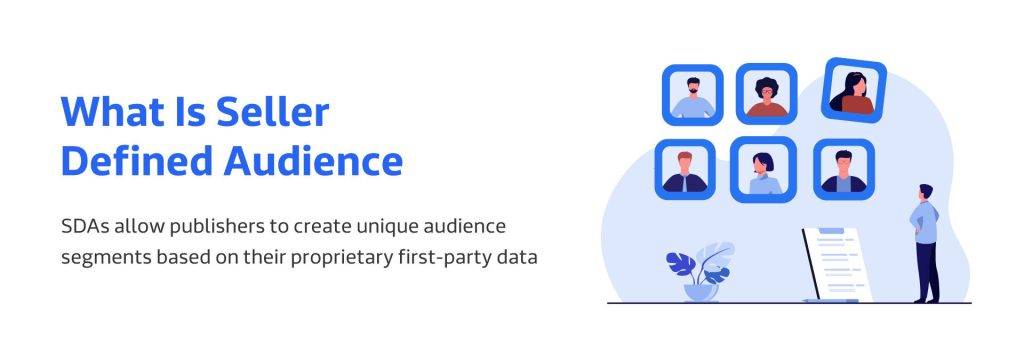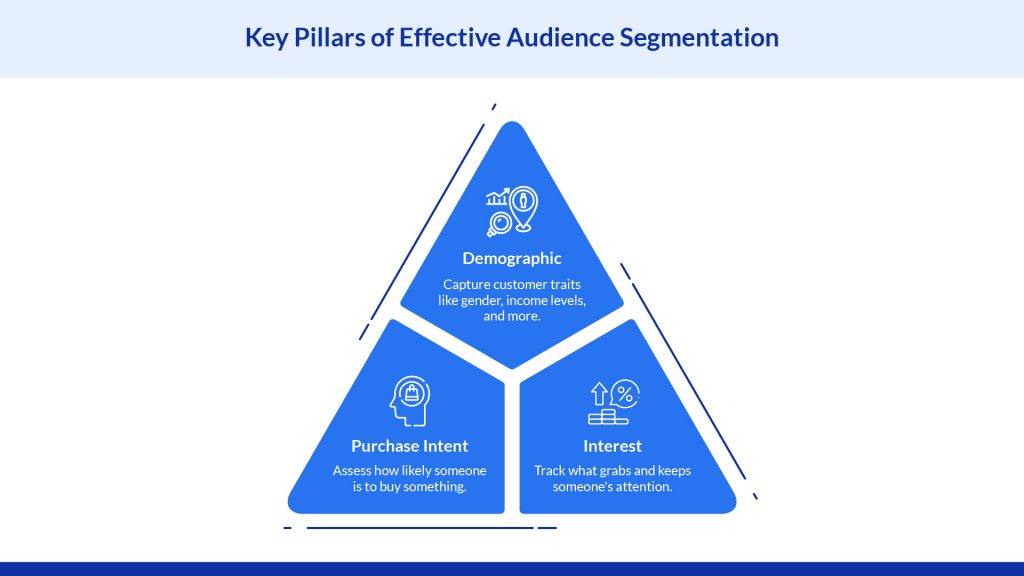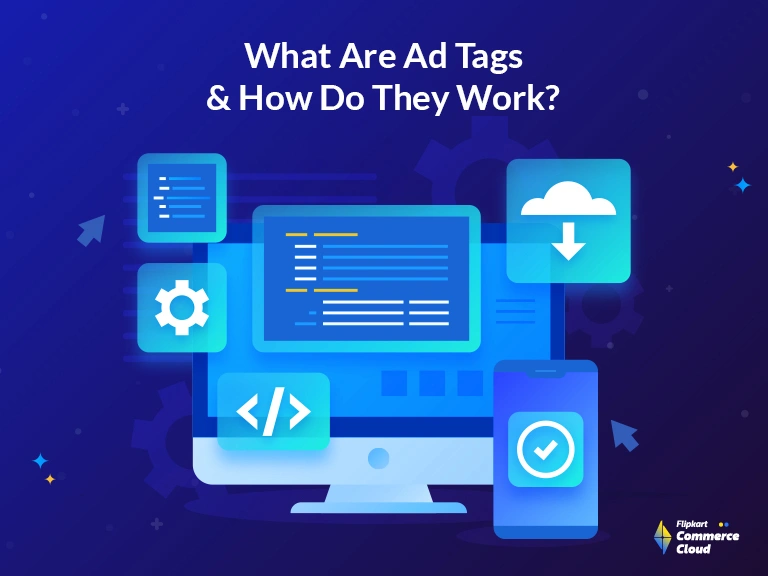
Seller Defined Audiences: Transforming the Retail Media Platform Landscape
By Flipkart Commerce Cloud
Share On:
The shift to privacy-focused strategies has become necessary in the rapidly evolving digital advertising landscape due to the phasing out of third-party cookies. This transformation is driven by changing consumer expectations and strict privacy regulations, making Seller Defined Audiences (SDA) emerge as a landmark strategy.
By using first-party data, SDAs enable a meaningful and privacy-compliant interaction with consumers, avoiding the limitations of the declining usage of third-party cookies. This ensures seamless delivery of personalized content to audiences with precision and discretion.
This blog will explore how Seller Defined Audiences are setting new standards by offering valuable insights for retailers and retail platforms. Read on.
What are Seller Defined Audiences (SDAs)?

SDAs are an innovative approach to audience targeting and is a technical specification developed by the Interactive Advertising Bureau (IAB) Tech Lab within Project Rearc, 2020. The approach marks a transition in the ad tech industry from traditional reliance on third-party cookies to a model emphasizing exclusive audience data and privacy protection.
SDAs allow publishers to create unique audience segments based on their proprietary first-party data. This information is then used to update advertising strategies, enabling marketers to deliver personalized and relevant ads to users. The strength of SDAs lies in their ability to utilize this rich data source while complying with privacy regulations.
The SDAs operate on the principle of communicating only Non-Personally Identifiable Information (Non-PII) to Demand-Side Platforms (DSPs). It ensures that while advertisers can target ads effectively, they do not have access to any personal data that could compromise user privacy. This balance of privacy and personalization is crucial as consumers demand meaningful, consent-based interactions.
The Evolution from Third-Party Cookies to Enhanced Privacy with SDAs
Customers are becoming more concerned about their online privacy, and the laws are changing to reflect this transition. This development has encouraged the advertising industry to move away from using third-party cookies, which track users’ activities across the open web. These cookies earlier used to be a key tool for advertisers, but they are seen as too invasive now.
This is where the concept of Seller Defined Audiences (SDAs) comes in. They offer a new way for retailers like you to reach your target customers. Instead of tracking users everywhere they go online, SDAs use information that users share directly with the website they are on. You can still show personalized ads based on what users do on the website without invading their privacy.
Using SDAs also lets you connect with the customers in a meaningful way. With this method, you can make the messages relevant to each user. This can help ensure a better user experience and encourage customers to buy something. This change is a move away from the traditional approach of trying to reach as many people as possible and instead focus on reaching the right people in the right way. SDAs are leading this change, showing how advertising can be personalized and privacy-friendly simultaneously.
How does SDA work?
SDA starts with the smart use of data you already have. It is focused on taking a closer look at your website visitors and grouping them in a way that makes sense for targeted advertising. Here’s how it works:
Segment Creation
The SDA workflow begins with publishers using their first-party data to create distinct audience segments. This data, collected directly from users, offers valuable insights into user behavior and preferences. This process is not random; it is about understanding the varied interests, behaviors, and preferences of your audience. By analyzing actions like past purchases, page views, and interactions on your platform, SDA allows you to create finely tuned-segments that reflect your audience’s different facets.
For instance, consider you have an online store selling various gadgets. You analyze the SDA data and identify three main customer interests, i.e., gaming devices, smartphones, and smart home gadgets. Each group represents a segment based on specific browsing patterns, enabling targeted promotions for each interest area.

SDA ID Transmission
Once these audience segments are formed, they are assigned unique SDA IDs. These IDs, which do not have personally identifiable information, are then communicated to Demand-Side Platforms (DSPs) via the OpenRTB protocol. This is where the groundwork you have done to understand your audience gets translated into actionable insights for advertisers. Securely transmitting these SDA IDs ensures that the right ads can find the right segments across the digital landscape.
Continuing with the previous example, you now assign a unique code (SDA ID) to each interest group. SDA signals DSPs about the preferences of each segment. For example, gaming device enthusiasts are labeled with a code that ensures they see ads for the latest gaming tech.
DSP Decision Making
The final step involves DSPs assessing these SDA IDs to determine their bidding actions on the available impressions. It is a calculated decision based on the detailed audience data encoded within each SDA ID. DSPs look at each segment’s characteristics, behaviors, and potential value to determine their bid request and place the ads that resonate with that audience group.
In the case of your online gadget store, at this stage, DSP receives unique codes and evaluates which group aligns best with their advertisers’ goals. Advertisers specializing in gaming accessories will bid actively to display their ads to the gaming device group. They will leverage the insights from the SDA ID to tailor their ad placements precisely.
How Can You Create Seller Defined Audiences?
By using the three pillars of IAB tech, you can create Seller Defined Audience for your retail store; here’s how:
- Embrace Data Transparency Standards: Start by adopting the IAB Tech Lab’s Data Transparency Standard. This ensures that the data you collect and use to segment your audience is clear, accurate, and all within privacy guidelines.
- Utilize Audience Taxonomy: The next step involves categorizing your audience data according to the IAB Tech Lab Audience Taxonomy. This grouping provides a standard framework for classifying audience characteristics, behaviors, and interests. Consider sorting your audience into well-defined segments, each labeled with interests, such as ‘tech enthusiasts’ or ‘fashion followers”. This strategy will make it easier to tailor your advertising messages.
- Apply Transparency Standards to Segmentation: As you segment your audience based on the data points and established categories, apply transparency standards to each step. This involves clear communication about how segments are created and used.
How Do Seller Defined Audiences Compare to Google Chrome's Topics API?
Both Seller Defined Audiences (SDAs) and Google Chrome’s Topics API aim to provide privacy-focused solutions for digital advertising. However, they differ significantly in their approach. Topics API, developed by Google, predetermines topics and limits the number of topics a site will receive. On the other hand, SDAs, developed by the IAB Tech Lab, leverage first-party data to create unique audience segments. Ensuring user privacy is preserved while still allowing for effective audience targeting.
How Do Seller Defined Audiences Compare to Universal IDs?
Universal IDs and SDAs identify users in the digital advertising ecosystem. However, Universal IDs revolve around identifying individual users, which can raise privacy concerns. In contrast, SDAs do not require the exchange of user identifiers between publishers, SSPs, DSPs, and DMPs. They rely on first-party data, ensuring user privacy is not compromised. This makes SDAs a more privacy-compliant solution for personalized advertising.
What are the Benefits of using SDAs?

Seller Defined Audiences offer a wide range of benefits for publishers and advertisers. These benefits originate from the unique attributes of SDAs, such as better privacy compliance and targeted advertising capabilities.
- Enhanced Privacy Compliance: SDAs operate within the framework of privacy-first advertising, using first-party data without the need for invasive tracking methods. This aligns with global data protection regulations, ensuring publishers and advertisers can maintain consumer trust while respecting privacy laws. SDAs mitigate the risks associated with data privacy concerns, setting a new standard for responsible advertising.
- Improved Targeting Capabilities: With SDAs, advertisers gain access to highly segmented audience data directly from publishers. The data reflects consumer interactions and interests on specific platforms and can be used for precise targeting. This means publishers can monetize their platforms more effectively by allowing advertisers to reach their ideal audience segments without guesswork.
- Direct Audience Engagement: Publishers using SDAs can create a deeper connection with their audience by using insights from direct interactions. This knowledge enables the creation of content and advertising that resonates more effectively with the audience’s preferences and behaviors. For advertisers, the benefit lies in being able to tailor their messages to match the audience’s specific interests, leading to higher engagement rates and a better return on investment.
- Operational Efficiency: The streamlined process of creating and utilizing SDAs reduces complexity in the advertising supply chain. For publishers, this means simpler segmentation processes and, for advertisers, it provides easier access to high-quality, consent-based audience segments. The efficiency gained here saves time and resources, allowing for a focus on strategy and creativity rather than operational logistics.
What are the SDA Implementation Challenges?
While Seller Defined Audiences (SDAs) offer numerous benefits, implementing them comes with its own challenges, like:
- Technical Integration: Integrating SDAs into existing systems can be complex due to the need to handle first-party data and unique SDA IDs. The solution lies in adopting flexible and scalable technology platforms that can easily incorporate IAB Tech Lab’s SDA specification, ensuring seamless integration with minimal disruption.
- Audience Segmentation: Accurately segmenting audiences and ensuring the data’s relevance can be demanding. However, you can create meaningful and relevant audience segments by using standardized taxonomies and data transparency standards.
- Privacy Concerns: Ensuring compliance with regulations like GDPR and CCPA while collecting and using audience data is a significant challenge. However, SDAs are designed with privacy in mind, and they use non-personally identifiable SDA IDs, ensuring user privacy is not compromised.
Hence, planning ahead and partnering with experienced technology partners is crucial.
Embracing SDAs with Flipkart Commerce Cloud for Future-Ready Retail Media Platform
By integrating Seller Defined Audiences (SDAs) into your digital strategy, you can balance the need for privacy-conscious advertising with the delivery of personalized experiences to your audience. However, to effectively implement and manage SDAs, you need a robust and experienced retail technology partner like FCC by your side.
FCC offers a complete marketplace tech stack, with solutions like retail ads, pricing, inventory, assortment management, and several other solutions that help retailers launch and scale online marketplaces with the advanced capabilities of a mature digital platform.
Interested to know how FCC can help you scale your digital presence? Book a free consultation with our retail media platform expert.
More Blogs
See how retailers and brands are winning with FCC

What is a High-Low Pricing Strategy?
Read More
Ultimate Guide To Dynamic Pricing Strategy In 2025
Read More
Retail Pricing Strategies: Winning with Promotion Pricing in Competitive Markets
Read More
Ad Tags: Enhancing Ad Serving Efficiency in Large-Scale Campaigns
Read More
Everything About Price Skimming Strategy Explained
Read More
What is a High-Low Pricing Strategy?
Read More
Ultimate Guide To Dynamic Pricing Strategy In 2025
Read More
Retail Pricing Strategies: Winning with Promotion Pricing in Competitive Markets
Read More
Ad Tags: Enhancing Ad Serving Efficiency in Large-Scale Campaigns
Read More
Everything About Price Skimming Strategy Explained
Read More
What is a High-Low Pricing Strategy?
Read More
Ultimate Guide To Dynamic Pricing Strategy In 2025
Read More
Retail Pricing Strategies: Winning with Promotion Pricing in Competitive Markets
Read More
Ad Tags: Enhancing Ad Serving Efficiency in Large-Scale Campaigns
Read More